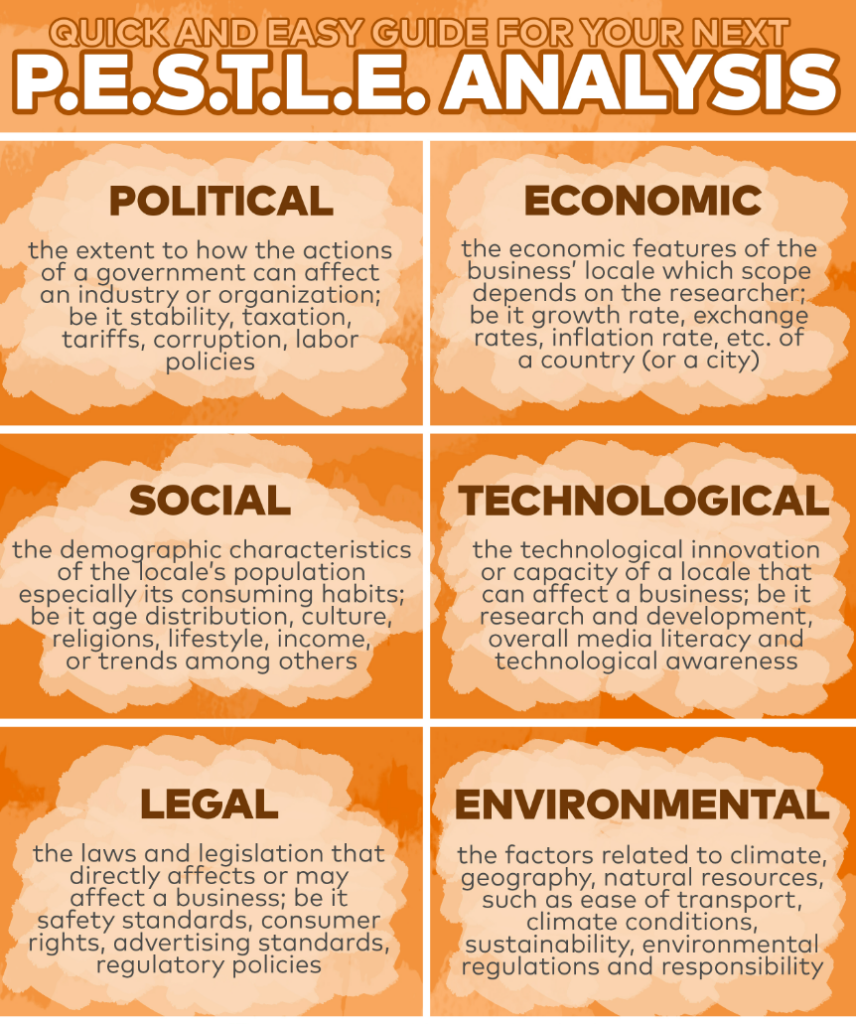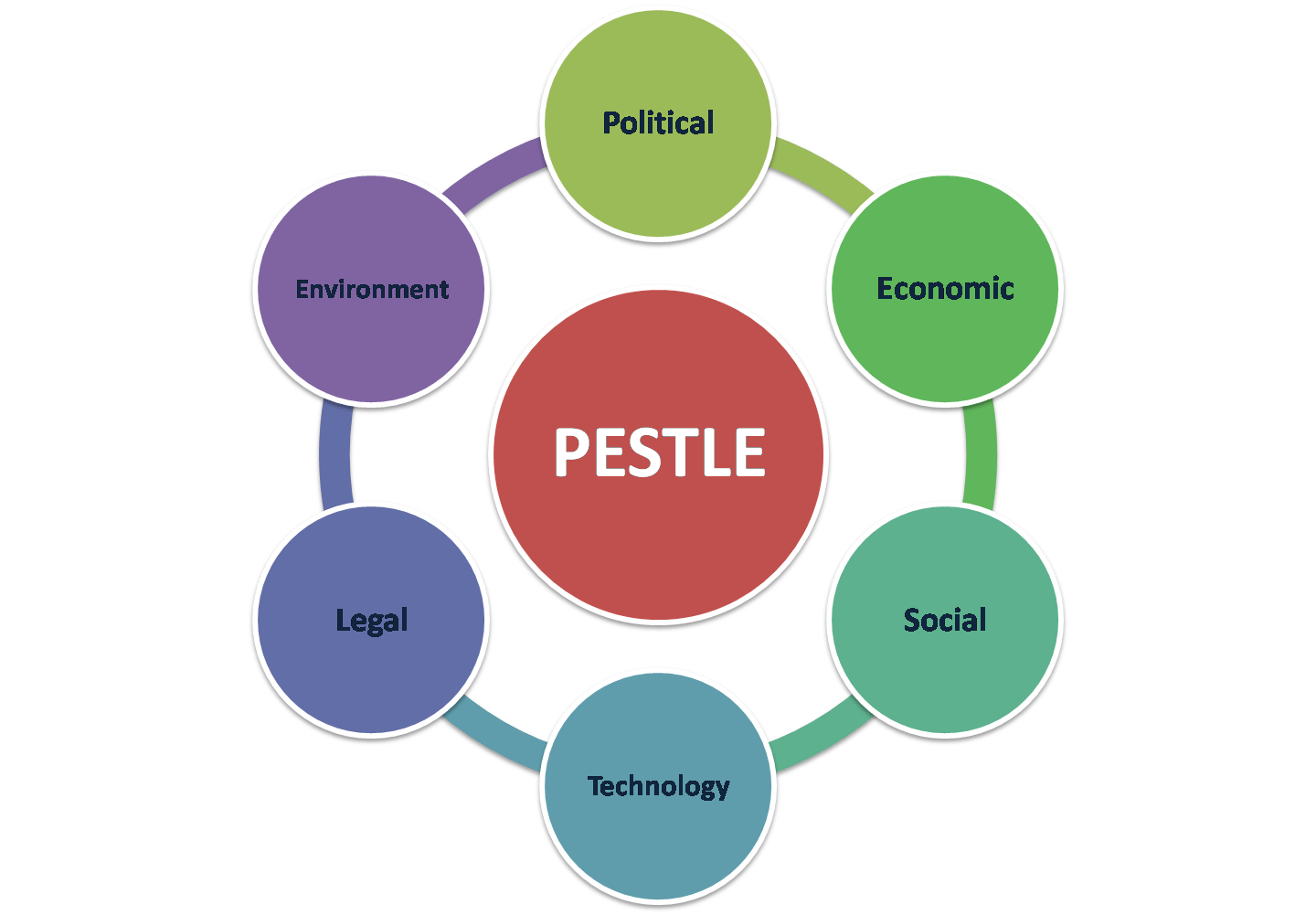
A Pestle Analysis is a strategic tool used to assess the external macro-environmental factors that may impact an organization. The acronym PESTLE stands for Political, Economic, Social, Technological, Legal, and Environmental factors. This guide will explain why conducting a Pestle Analysis is important and how to effectively use it.
Firstly, it is important to recognize that external factors beyond an organization’s control can have a significant impact on its success or failure. For example, changes in government regulations or shifts in consumer behavior can greatly impact a business’s operations. Therefore, conducting a Pestle Analysis can help identify potential threats and opportunities that may arise from these external factors.
To conduct a Pestle Analysis, begin by gathering information about the six factors:
1. Political factors – Examining the impact of government policies on the industry, legal regulation, and trade policies.
2. Economic factors – Assessing the impact of the current economic situation, monetary policies, and market conditions.
3. Social factors – Considering societal and cultural changes, demographic trends, consumer attitudes.
4. Technological factors – Analyzing advancements in technology, automation, and innovation that could potentially disrupt the industry.
5. Legal factors – Examining legal considerations and regulatory frameworks.
6. Environmental factors – Assesing ecological and environmental aspects, such as climate change, pollution levels, and sustainability.
Once you have gathered data about each of these factors, it is important to analyze how they interact and may impact your organization. To do so, follow these steps:
1. Categorize each factor as an opportunity or a threat.
2. Consider how multiple factors might interact with each other, for example, how political and economic factors might impact the legal and social factors.
3. Rank each factor based on its relevance and importance to your organization.
4. Develop and prioritize strategies to address the most significant threats and opportunities identified.
In conclusion, conducting a Pestle Analysis can provide significant benefits to an organization. It can help identify potential threats and opportunities from external macro-environmental factors. By understanding the six factors that make up Pestle, an organization can take necessary measures to mitigate risks and capitalize on opportunities to achieve its strategic objectives.





